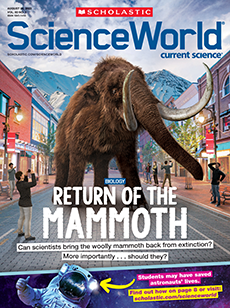Recycling has changed a lot in the past 20 years. A few decades ago, everyone had to sort their recyclables, separating materials like paper and aluminum cans into separate bins. Now most communities in the United States use single-stream recycling. This allows residents to toss all their recyclables into a single, large container to get sorted once it’s dropped off at a recycling plant. “We have much more advanced equipment in recycling facilities we can use to sort out the various materials,” says Jill Martin. She’s the director of state programs for the Recycling Partnership, a nonprofit that focuses on building a better recycling system in the U.S.
The country’s recycling rate is 34 percent, which means one-third of all waste that would otherwise end up in a landfill is recycled. That number could go up thanks to new facilities like Ohio’s Rumpke Recycling and Resource Center, which opened in 2024. This cutting-edge recycling facility can process up to 250,000 tons of recyclables each year!
Recycling has changed a lot in the past 20 years. A few decades ago, everyone had to sort their recyclables. They separated materials like paper and aluminum cans. Then they placed them in separate bins. Now most communities in the United States use single-stream recycling. Residents can toss all their recyclables into a single, large container. It’s taken to a recycling plant, where the items are sorted. “We have much more advanced equipment in recycling facilities we can use to sort out the various materials,” says Jill Martin. She’s the director of state programs for the Recycling Partnership. This nonprofit aims to build a better recycling system in the U.S.
The country’s recycling rate is 34 percent. That means one-third of all waste is recycled instead of going to a landfill. That number could go up, thanks to new facilities. One of them is Ohio’s Rumpke Recycling and Resource Center. This cutting-edge recycling facility opened in 2024. It can process up to 250,000 tons of recyclables each year!

